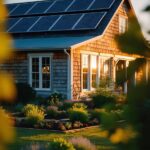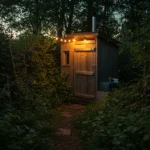Off-grid living requires setting up and monitoring your own water systems for drinking, irrigation, and other uses.
You need to account for your water usage and build a system with a backup plan.


A well is a good, but expensive, option. The cost increases with the depth required for drilling.
After drilling, wells tend to be a reliable source of water, but testing is still necessary. Wells also require an off-grid pump, which can be solar powered, hand-powered, or electric.
Springs are natural wells but are difficult to find.
They are good sources for drinking water, but may require an additional source for daily usage.


Rainwater harvesting is a simple and affordable method for collecting water. Calculate your rainwater collection potential using the average monthly rainfall for your area and a rainwater collection calculator.
A basic system includes:
Non-toxic roofing materials. Rainwater collection barrels or tanks.
Tank screens. Connections to gutters or downspouts. Water filters. First flush diverters.
Underground pipes leading to indoor plumbing
A pump system
To maximize the efficiency of off-grid living, consider building the smallest home possible, ideally between 60 and 1,500 square feet, as this will reduce energy and water needs and make heating easier. When building, consider using multifunctional spaces, vertical storage, and simple kitchen designs.


Setting up an off-grid water system involves careful planning, resource assessment, and the use of appropriate technologies to ensure a reliable and sustainable water supply.
With the right blueprint, you can create a sustainable and efficient off-grid water system tailored to your needs and environment.


